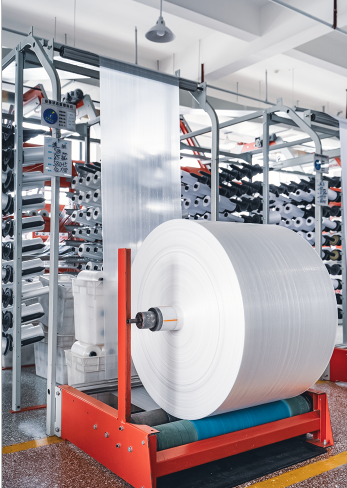The 5 basic types of valve bag filling machines are auger, impeller, air, gravity, and vacuum fillers. Each type uses a different mechanism to dispense product into the valve bag.
What Makes Valve Bag Systems Work
A bag on valve system consists of specialized bags designed to work with horizontal filling equipment. The valve bag filling machine deposits material through a spout that enters the bag’s corner opening, which self-seals when filling completes.
This bag on valve packaging approach creates square, stable packages that palletize securely and display product information clearly. The system works because the bag design and filling equipment are engineered to work together efficiently.
| Type | Best For | Speed | Key Advantage |
|---|---|---|---|
| Auger | Powders, flakes | Slower | Precise metering |
| Impeller | Granular materials | Fast | Less air entrainment |
| Air/Pneumatic | Fluidized products | Very fast | High-speed operation |
| Gravity | Free-flowing materials | Moderate | Low cost, simple |
| Vacuum | Ultra-fine powders | Fast fill, slow cycle | Handles difficult materials |
Auger systems use a horizontal screw mechanism to convey product from the supply hopper through the fill spout into the bag. The rotating screw provides precise control, making these bag filling machine systems ideal for cake-like powders, flakes, and granular products that need accurate metering.
While auger-style equipment typically operates slower than other types, it offers excellent portion control and works well with materials that don’t flow easily on their own.
Impeller packers use multi-blade rotors to create positive pressure that moves product into bags. These systems excel with granular materials and provide faster filling rates than auger systems while using less air entrainment.
The efficiency of impeller systems makes them popular for medium to high-volume operations where speed matters but product characteristics don’t require specialized handling.
Air packers, also called pneumatic or forced-flow systems, blow fluidized material into valve bags at high speeds. These bag packaging machine systems offer excellent weight accuracy combined with rapid filling rates.
The pneumatic approach works best with materials that fluidize well, creating efficient high-volume production lines with minimal strain on the bags during filling.
Gravity packers rely on weight alone to draw product through a funnel into the bag. These represent the most cost-effective bag filler machine option, often requiring no external power source.
While gravity systems operate more slowly than powered alternatives, they provide reliable service for free-flowing materials where simplicity and low maintenance are priorities.
Vacuum packers use negative pressure to draw material into valve bags placed in vacuum chambers. This specialized approach works specifically for ultra-fine products like carbon black, fumed silica, and graphite that are difficult to handle with other methods.
The vacuum approach provides fast, accurate filling but requires more time for bag placement and removal from the chamber system.
Manual operations require operators to place bags on the fill spout and remove filled bags by hand. This approach works well for smaller operations or specialty products where flexibility matters more than speed.
Semi-automated systems still require hand placement of bags, but mechanical discharge and conveyor systems handle filled bags. This middle ground provides increased efficiency while maintaining reasonable equipment costs.
Fully automated systems handle bag placement, filling, discharge, and palletizing without manual intervention. These high-speed operations suit large-volume production where consistency and speed are critical.
Tea bag filling machine operations require precise portioning and gentle handling to maintain product quality. These systems often use modified impeller or auger mechanisms designed for the specific characteristics of tea products.
Coffee bag filling machine setups need to preserve aroma and prevent oxidation during packaging. Many operations combine air-tight filling systems with specialized valve bags designed for coffee storage.
Many operations require custom-designed bag-in-box filling machines that handle specific products or unusual packaging requirements. These specialized systems combine elements from standard filling types to create unique solutions.
Chemical products often require specialized equipment that handles corrosive materials safely while maintaining accurate weights and preventing contamination during the filling process.
While XIFA doesn’t manufacture valve bag filling machines, we specialize in producing high-quality valve bags designed to work perfectly with these filling systems. Our customized valve bag wholesale operations provide bags engineered for optimal performance with your specific equipment.
Our 25kg valve bags feature:
XIFA’s 40-acre manufacturing facility includes 150 circular weaving machines and 15 advanced printing presses that produce valve bags to exact specifications. Our 25 years of experience serving major clients like CNOOC Group and PetroChina ensures reliable quality for demanding applications.
Key specifications of our valve bags:
For detailed specifications, visit our 25kg valve bag page or contact us about custom valve bag options for your specific filling equipment requirements.
Success depends on matching your filling equipment with properly designed bags. Consider your product characteristics, production volume, automation requirements, and quality standards when selecting both equipment and bag specifications.
Work with experienced bag manufacturers like XIFA who understand how valve bags interact with different filling systems. Our expertise ensures your bags perform reliably with your chosen equipment, minimizing downtime and maximizing efficiency.
The right equipment paired with quality valve bags creates an efficient packaging system that protects your products while maintaining the speed and accuracy your operation requires.




